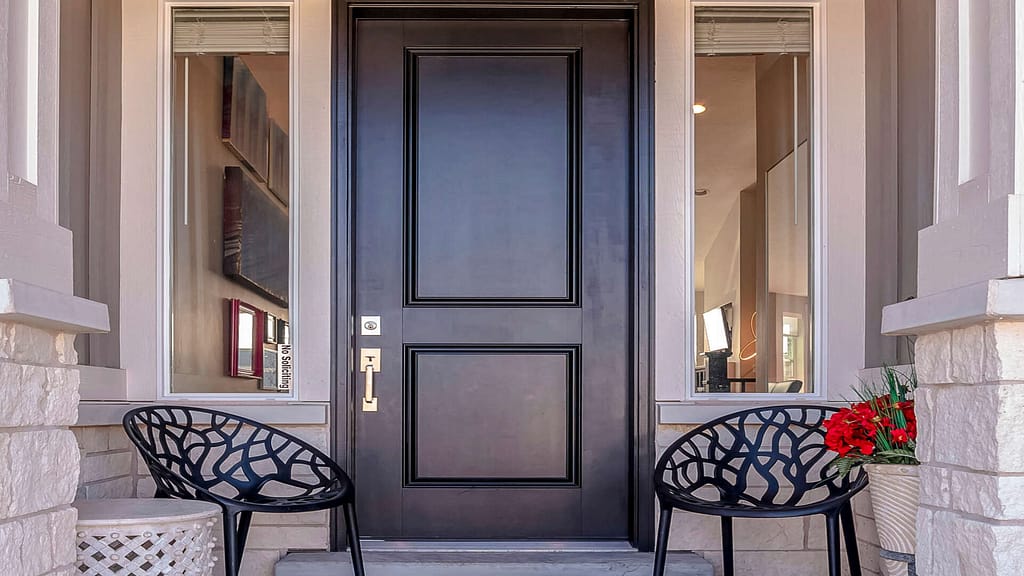
To frame an exterior door, begin with accurate measurements, then cut the opening and set the studs. Our guide walks you through installing the jamb, hanging the door, and sealing gaps for a secure, insulated entryway.
Disclaimer: The content provided in this blog post is for informational purposes only. Properly framing an exterior door requires skill and understanding of structural integrity. Mistakes can result in compromised security, energy inefficiency, or damage to your home. If you are not experienced in framing or construction, we recommend seeking the guidance of a professional carpenter or contractor. We are not responsible for any mishaps, injuries, or damage that may arise from following the instructions or tips in this post. Always prioritize safety and use appropriate tools and techniques.
Table of contents
Why Exterior Door Framing Matters?
A strong door frame is key to a secure and energy-efficient home. It keeps your door sturdy and helps you save on heating and cooling bills. Plus, a well-built frame adds an extra layer of security against break-ins. Let’s dive into how important your exterior door framing is.
The Consequences of a Poorly Framed Door
- Air Leaks: A bad frame can let cold or hot air seep in, increasing your energy bills.
- Reduced Security: Weak frames are easier for intruders to break through.
- Structural Instability: Poor framing can make the door wobbly and less durable over time.
Home Security: Why Exterior Door Frames Matter?
A sturdy exterior door frame is a homeowner’s first line of defense against potential intruders. While the door stops bad people from getting in, the frame keeps the door steady and fixed. Stopping potential door kickers or even the unwelcome relative.
Poorly installed or weak frames can compromise the door’s integrity, making it easier for unauthorized entry. By investing in a robust exterior door frame and ensuring proper installation, homeowners can enhance their home’s security and gain peace of mind.
Safety First: Essential Tips for Framing an Exterior Door
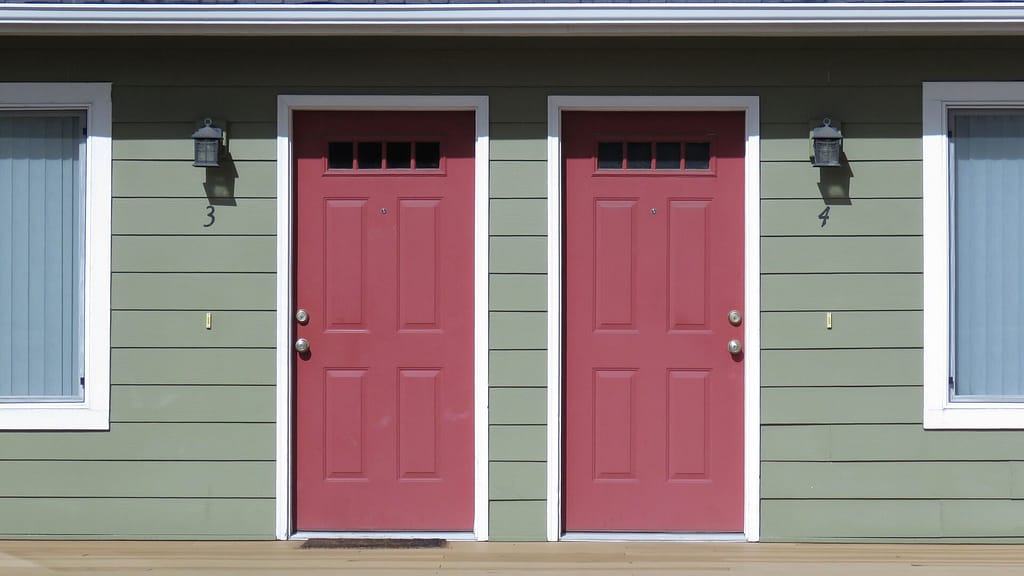
- Wear Safety Gear: Gloves, goggles, and a hard hat.
- Check for Utilities: Before drilling or cutting.
- Stable Surface: Work on non-slip, stable ground.
- Lift Properly: Bend knees, and keep back straight.
- Cordon-Off Area: Keep bystanders and children away.
- Maintain Tools: Check for wear and proper function.
- Mind the Weather: Watch for wet or extreme conditions.
Tools and Materials You’ll Need for Framing an Exterior Door
| Tools You’ll Need for Framing an Exterior Door: | Materials You’ll Need for Framing an Exterior Door: |
| Tape Measure Level Hammer Screwdriver or Drill Saw Chisel Pry Bar Shims Utility Knife Carpenter’s Pencil or Chalk Line Square Clamps Safety Gear | Lumber Screws Nails Door Jamb Kit Door Sill Shims Insulation Caulk Weatherstripping Door Hardware Primer and Paint Flashing Tape Door Slab |
Exterior Door Frame Installation Guide
Putting in an exterior door frame the right way is crucial for homes. It helps the door work properly, keeping cold or heat outside where it belongs. This guide offers easy steps to get it done correctly.
Measurements
Before you start any work, it’s essential to measure the size of your door. You’ll need to make sure you have a little extra room, especially if you plan to use things like weather strips, which are common for outside doors to keep out drafts and moisture.
Once you’ve got the measurements, sketch the door’s placement on the wall using either chalk or a pencil. This will serve as your guide.
Cut Opening
Carefully cut along the lines you’ve drawn, ensuring that your cuts are straight and clean. A straight cut is crucial as it ensures your door fits snugly, preventing any unwanted gaps that could let in drafts or compromise security.
Putting Up Supports
Once the opening is ready, you’ll need to reinforce it. Install two tall boards also known as king studs on either side of your door opening. Then, place a horizontal board across the top. These boards give the necessary support to the door and bear the weight of the wall above.
Lay the Sill
In places like New Jersey, the board at the bottom of the door space is called the sill. The sill keeps rain and cold air out of your home. Given New Jersey’s weather, a good sill keeps the inside of your home comfortable and dry.
Check Alignment
When setting up a door, it’s really important to make sure everything is straight. You should use a tool called a level to check. This tool has a little bubble inside. When you put the level on your door or frame, look at the bubble.
If the bubble is between the two marked lines on the level, then the door is straight. If not, you need to adjust it. Making sure your door is straight will help it work better.
Insulating
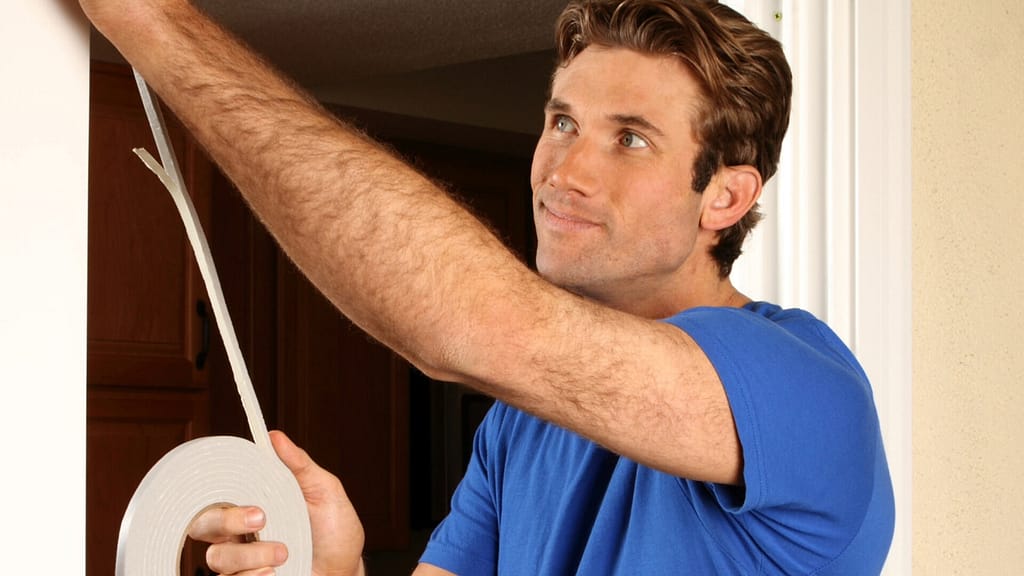
Winters in New Jersey are typically cold. Therefore, it’s important to add insulation material between the door frame. This insulation stops cold air from entering and keeps the warmth inside. It also helps save energy and makes the home more comfortable.
Hanging the Door
Begin by placing the door frame inside the designated opening. Ensure it is aligned correctly and secure. Once the door frame is in the correct position, attach the door. Open and close the door several times, checking its movement to ensure it operates without problems and fits well when closed.
Trimming and Sealing
Once the door is in place, enhance its appearance by adding trim around the door frame edges. This trim serves to cover any imperfections and provides a finished look. If there are any small gaps between the door and the frame, it’s essential to address them.
Install Lock
Attach the door handle and lock to your door. It’s important to select a sturdy lock to enhance your home’s safety. After fitting it, take a moment to lock and unlock it multiple times, ensuring that it works as expected.
Additionally, regularly checking the condition of your lock can help identify any wear or issues early on, ensuring continuous security for your home.
Wood frame vs. Metal frame
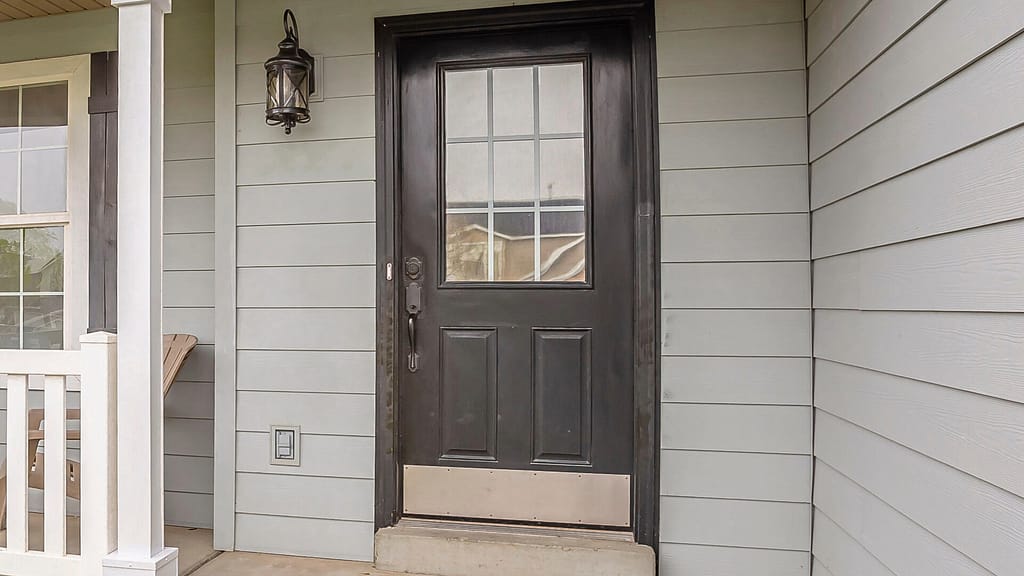
Wood Frame
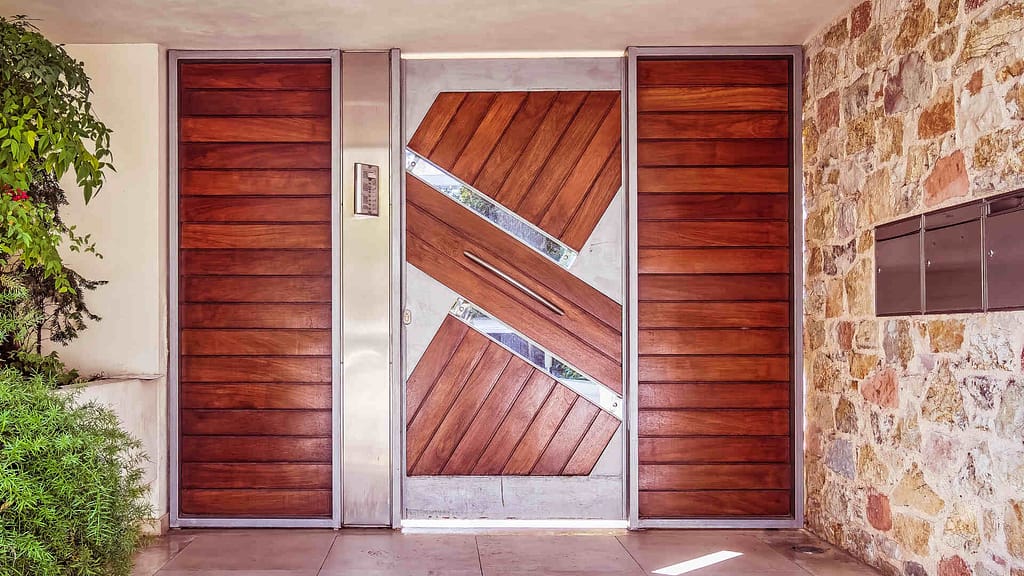
Metal Frame
| Wood Frame | Metal Frame | |
| Aesthetic: | Warm and natural look. | More industrial and sleek. |
| Maintenance: | More frequent due to the potential for rot and damage from elements. | Lower; resistant to weather and pests. |
| Durability: | Can warp over time when exposed to moisture. | Resists warping and lasts longer in harsh conditions. |
| Security: | Generally less resistant against forced entry compared to metal. | Offers better protection against break-ins. |
You Might Consider an External Security Gate
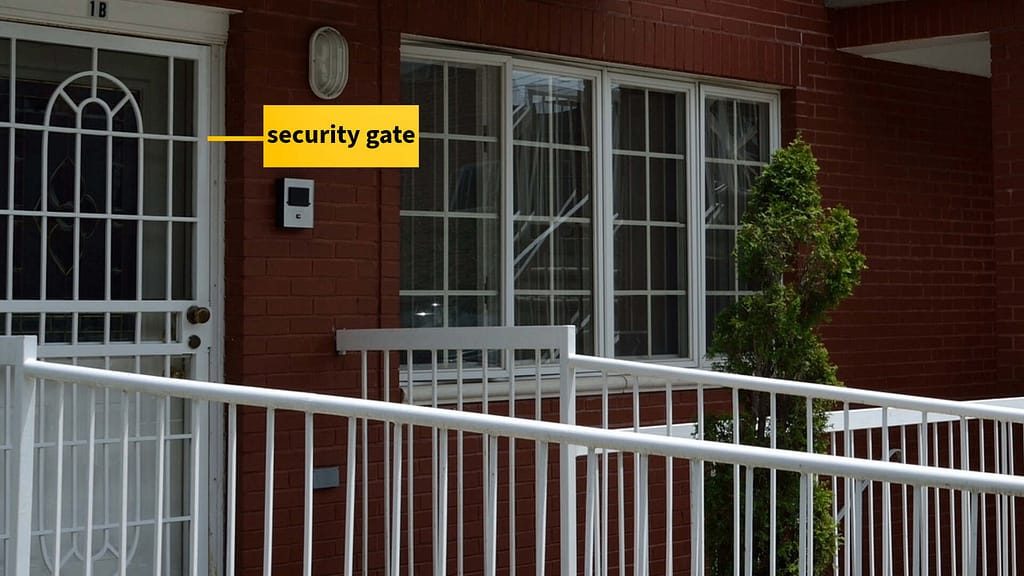
- Safety: A strong door frame keeps your home safe, but an outside security gate gives even more protection against break-ins.
- Aesthetic Appeal: Modern security gates not only keep your home safe but also make it look better.
- Increased Property Value: Homes with added security measures, including external gates, can often have a higher market value. Prospective buyers see the benefit in an already secure entryway.
- Peace Of Mind: Having an extra layer of security helps you feel more relaxed and safe in your home.
- Air Flow: In New Jersey’s warm summer months, a security gate lets you open your door to let in a breeze, cooling your home while reducing the risk of unwanted entry.
When to Consult a Professional
Sometimes it’s better to call an expert when setting up a new door. They can help you if you’re worried about your house’s safety if you’ve cut the hole for the door the wrong size, or if you need a door with extra security features.
- Structural Concerns: If you’re unsure about how framing a new door will affect the durability of your home, consult an expert and get a quote.
- Building Codes: If you’re unclear about local building codes and regulations, a professional can ensure your project is compliant.
- Mismatched Measurements: If you’ve already cut the rough opening and the measurements don’t match the door size, it’s best to consult an expert to correct the issue.
- Insulation Challenges: In cases where specialized insulation is needed, such as foam injection, a professional will have the right equipment.
- Existing Damage: If you notice signs of rot, mold, or structural damage around the existing frame or opening, get a professional evaluation.
- Electrical or Plumbing Conflicts: If the desired location for the door interferes with existing electrical wiring or plumbing, consult a professional before proceeding.
- Security Concerns: For doors that require specialized security features, it’s advisable to have a professional handle the installation.
Conclusion
Exterior door framing stands as a fundamental element in ensuring a home’s security, aesthetic appeal, and energy efficiency. The meticulous choice of materials, whether wood or metal, combined with accurate installation practices, can profoundly affect a home’s resilience against unwanted intruders and its overall energy consumption.
For homeowners, it’s important to think carefully about door framing. After setting up a door, it’s important to keep checking and fixing it. If there are problems or doubts, it’s good to ask experts for help. This makes sure the door stays strong and works well for a long time.
Fact checked by Christinne Somo – 10/23/23
